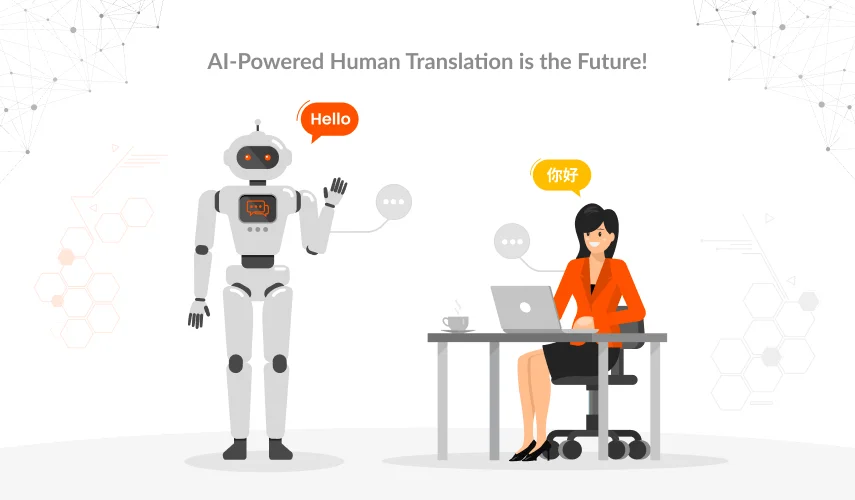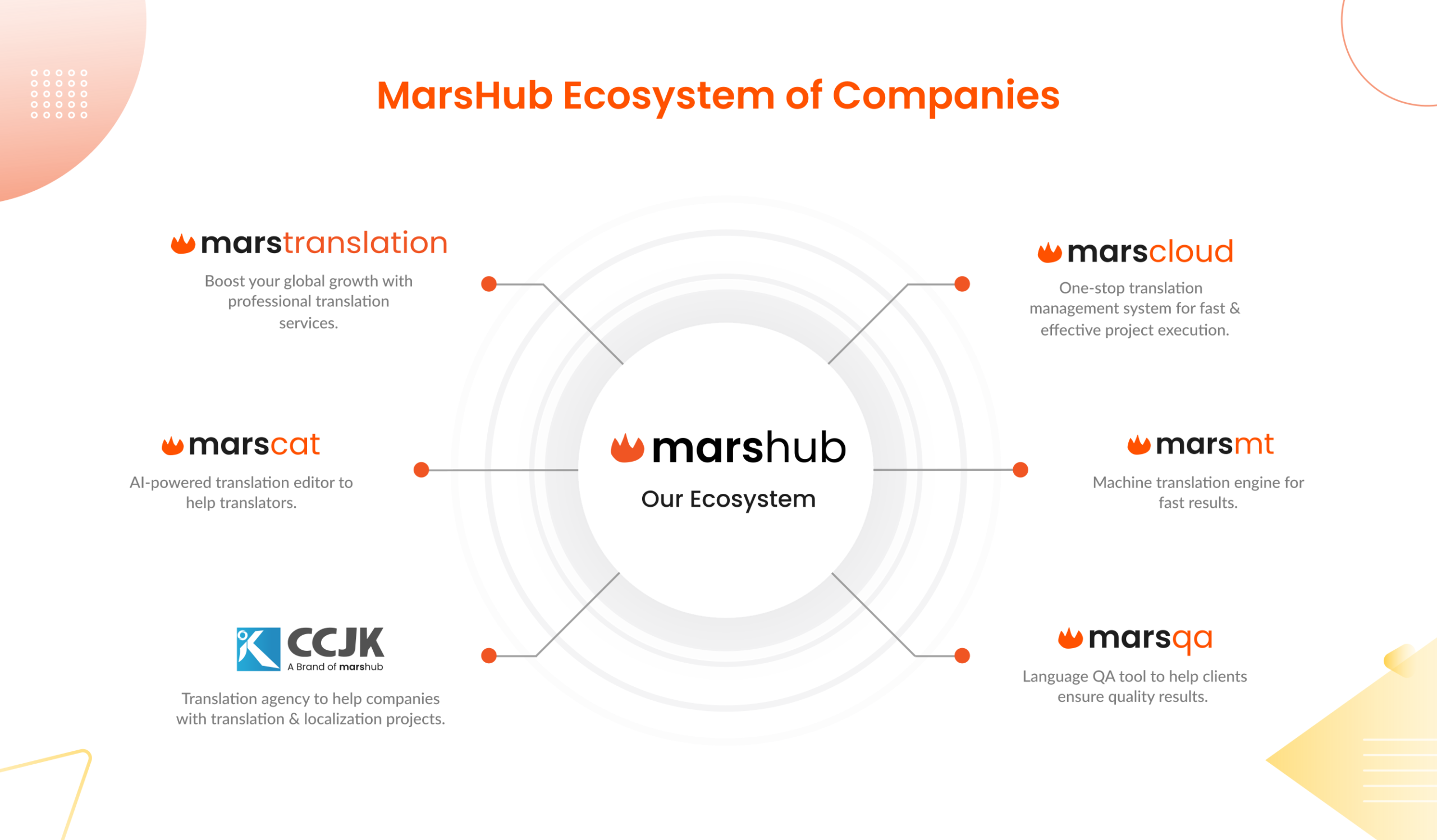The impact of AI technology on the world and humans is already a matter of contention. Like any other sector, AI is gradually dominating the translation industry. A lot of questions are popping up regarding the significance of AI technology, the job security of human translators, and its impact on global business localization.
Talking about businesses, we have seen a rapid shift in the global business landscape over the past few years, post-pandemic. After getting a major hit when COVID happened, global companies came out even stronger. Businesses are now more inclined towards globalization to explore their potential in foreign markets. The changing business regime and globalization led to increased demands for advanced technological tools in the translation industry. A global business can use a professional translation management system or a localization management tool to get away with the modern-day globalization challenges. Let’s have a closer look at the influence of AI in the translation industry and what the future of the translation sector looks like.
History of Translation Technology Evolution
Well, Google Translate is not the oldest machine translation tool but the most recent one. The history of machine translation technology goes back 70 years. It started with ruled-based translation, then a statistical translation model to current-day neural translation networks that also use AI algorithms. Before heading toward the future of the translation industry, we should break down the evolution of translation tools.
1. The idea of Machine Translation
IBM and Georgetown had a project together in 1954; under this project, they created the first computer to translate content from one language to another. It was an IBM 701 computer that could translate 60 sentences from Russian to English. However, it was a small step, but it proved that machine translation is possible. Many other experiments took place after that but proved quite expensive and time-consuming. Initially, government and global companies didn’t have much faith in machine translation tools, and after some time, they also stopped funding the idea. However, the research kept going because many could see the potential behind machine translation tools.
2. Rule Based Translations
For the very first machine translation experiments, the rule-based machine translation method was used. In this translation model, the computer followed the rules of programming languages to create translations. First of all, the translations generated from this model were not very accurate. Secondly, you had to teach your computer the vocabulary of both source and target languages, which again was very time-consuming. And lastly, each language worked with different grammatical rules, which caused other complications.
3. Example-Based Translations
In the 1980s, example-based translation models came into play, which started the next phase of machine translation technology development. This translation model generated new translations by using previously translated data and making some changes to fit the context. Unlike rule-based translations that translate each word individually, example-based translations search databases for similar sentences and use that translation with slight modifications. For instance, if you want to translate “I want to become a doctor”, and you find a similar phrase from already translated databases, such as “I want to become a writer”. Example-based translations use the same sentence replacing “doctor” with “writer”. In this case, it is just one word that is translated, and the whole sentence stays the same. It also significantly reduced the time for translations.
4. Statistical Machine Translations
The very first statistical machine translation model was created by IBM, which was a big breakthrough in MT evolution. This MT model would use the same words in different languages to create a statistical network. According to research, looking at the text of different languages enough times can help them see patterns in translations. These translation patterns could be programmed into computers to generate quick and more accurate translations. After the commercialization of the internet, the very first online translation engines, including Google Translate, used statistical machine translations.
5. Neural Machine Translation & AI
After 2015 and onwards, neural machine translations took over the translation industry, and it was a huge achievement for the translation industry. These translation models use advanced algorithms combined with artificial intelligence that allow neural translation software to create quick and quality translations. Using a neural machine translation, you can easily translate high volumes of text faster with good accuracy. Neural translation models also used deep learning techniques to teach the machine how they could translate more naturally. Neural translations are high quality and easier to reach. Some advanced neural translation software can produce fluent translations that are indistinguishable from human translations.
How is Artificial Intelligence Affecting the Translation Industry?
AI machine translation technology is gradually transforming the future of the translation business. Advanced translation tools are in high demand these days for their enormous benefits. Here are the key advantages of translation tools that will give you some idea about how AI MT tools influence the translation industry today.
1. Fast and Efficient Translation Processes
Contemporary AI-powered translation systems are powerful enough to handle multiple translation projects at once. These tools automate the translation processes and streamline your task workflow to achieve high work efficiency and speed. It eliminates manual file management and limits human intervention in everyday translation operations. These advanced tools allow you to manage more work in less time and prevent delays in content delivery. Moreover, using a professional translation management system, you can significantly reduce your time to market the brand in foreign markets.
2. Enhanced Translation Quality
Translation quality has to be your major concern when it comes to building a robust brand image in global markets. Human translators are generally higher quality and more fluent, but there are still chances of error when you are manually handling everything. Getting a professional translation tool on board can help you effectively manage your translation resources and generate better quality outcomes.
The built-in translation editing and quality assurance features in your TMS make it much easier for you to detect and eliminate errors from your translated documents. You can combine automated QA testing with professional proofreading to get good results.
3. Reduce the Need for Human Workforce
Traditional methods of managing translation involve complicated and time-consuming processes. You would require extensive staff to manage the translation operations on a regular basis. Because of the excessive intervention of the human workforce, there is a high likelihood of manual mistakes and mishandling. Machine automated systems reduce the need for excessive manual efforts and help you manage more work in less time, with fewer resources and less labor.
Similarly, when you use an international brand posting editing approach to do your translations, you will be hiring fewer human translators.
4. Enhanced Remote Teams Collaboration
Team communication plays an important role in effective project management, and it also gives your team members a sense of purpose and a broader vision. However, managing remote teams might get challenging, and there will be more gaps in communication. Using a professional translation management system can help you bring your translation teams together and work in one digital workplace. It allows your translators to communicate in real-time and access all the information directly through the platform. This way, you can create a collaborative and safe digital work environment, regardless of your employees’ locations.
5. Low-Cost Translation Management
Machine translation tools are known for reducing your translation project cost through AI and automation. AI-powered translation management is more convenient and cost-effective than manual translation. You will need fewer translators because of automated processes and machine-generated translations. Moreover, these systems also allow you to make better use of resources and avoid resource wastage. Using an AI machine translation system, you can manage all your translation tasks under one system, and there is no need to invest money in multiple apps and software for editing, quality assurance, and team management.
Emerging Artificial Intelligence Tools for Translations
You can find plenty of AI translation management tools that will look after various aspects of your translation project management. However, choosing the right technology for your brand translation is critical. Here are some common artificial intelligence tools for translation project management.
1. Machine Translation Engines
You use machine translation engines to generate automated translations. Machine translation tools help you produce quick translations; they use advanced AI algorithms to translate any text in seconds. However, the quality of translations highly depends on the efficiency of a translation tool. Paid machine translation engines are likely to provide higher accuracy and quality than open-sourced translation engines. Make sure to choose a reliable and well-reputed translation engine to generate a translation for your international brand. A poor translation can really spoil your brand reputation and also put a question mark on your brand’s credibility.
2. Translation Management Systems (TMS)
Global enterprises and language services providers use professional TMSs to get their translation project operations streamlined and well-organized. From generating automated translation and optimizing translation workflow to managing teams and resources, advanced TMSs have almost everything covered. It is a good investment for large-scale translation projects and also if you have to manage multiple translation projects at once. Every TMS is different in its specifications and features, so you can choose the ones that meet your requirements. Some TMS vendors also allow their clients to customize their system’s functionalities for more effective translation project management.
3. AI Editing & QA Tools
Editing and testing your translations to ensure good quality is essential to avoid mistakes in your translated documents. You can have your editing and QA tools built into your TMS and localization systems, or you can separately buy them. AI-powered translation QA and editing tools help you edit your documents faster as they instantly detect and highlight the mistakes in your files. They may also give you correction suggestions to improve the quality of your translations.
Will Artificial Intelligence Tools Replace Human Translators?
These tools will surely change the way human translators do their jobs. The emergence of AI in the translation industry has indeed raised many questions regarding translation jobs and the demand for human translators. The increasing demand for AI-powered technologies in the translation industry is becoming a constant threat to translators, and they may lose their jobs.
Well, if there is anything translators need to worry about, it is to keep up with the times and go with the flow. No matter how much AI technology may evolve, we will still need good translators to manage powerful translation algorithms, machine translation QA testing, AI data feeding, and a lot more. Things seem like they are turning in favor of translators because there will be better and well-paid jobs for professional translators. However, translators will be polishing their craft and gaining expertise to use new tools and technologies.
Final Thoughts!
AI technology has really changed how we translate content and manage our global translation projects. It optimizes the task workflow, enhances the translator’s work efficiency, and improves the overall brand localization experience. Currently, businesses are investing in more AI-powered translation tools to ease their global journeys, making translation project management smooth and effortless.
The future of AI technology in the translation industry also seems bright, and it will transform the way translators do their jobs. The time has come for businesses to start investing in modern technology; otherwise, the competition will leave them way too behind. If you are looking for a reliable translation and localization management system, MarsCloud is quite an affordable and reliable tool. It is an all-in-one translation and localization project management system used by global enterprises and LSPs. MarsCloud also provides integration options, so you can work on different apps without leaving the system.



